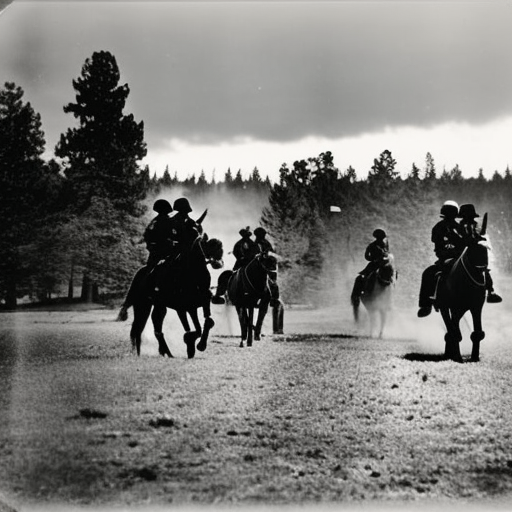Battle of Landen: A Decisive Conflict in the War of the Grand Alliance
The Battle of Landen, also known as the Battle of Neerwinden, took place on July 29, 1693, during the War of the Grand Alliance. It was a significant conflict between the French army, led by Marshal Luxembourg, and the Allied forces, commanded by William III of England. The battle occurred near the village of Neerwinden in present-day Belgium and resulted in a decisive victory for the French.
The Context:
The War of the Grand Alliance was a major European conflict that lasted from 1688 to 1697. It pitted an alliance of European powers, including England, the Dutch Republic, and the Holy Roman Empire, against the expansionist ambitions of Louis XIV of France. The war was fought primarily on the European continent and involved numerous battles and sieges.
The Opposing Forces:
The French army, under the command of Marshal Luxembourg, was highly experienced and well-disciplined. It consisted of around 80,000 troops, including infantry, cavalry, and artillery. The Allied forces, led by William III of England, were composed of soldiers from various nations, including England, Scotland, the Dutch Republic, and the Holy Roman Empire. They numbered approximately 50,000.
The Battle:
The Battle of Landen began with a French assault on the Allied right flank. The French cavalry, led by Luxembourg himself, launched a fierce attack that broke through the Allied lines. The Allied troops, caught off guard, were unable to withstand the onslaught and were forced to retreat. The French then turned their attention to the center of the Allied position, where they encountered stiff resistance.
The battle raged on for several hours, with both sides suffering heavy casualties. The French artillery played a crucial role in the conflict, bombarding the Allied lines and causing significant damage. Despite their best efforts, the Allied forces were unable to regain the initiative and were gradually pushed back.
The Outcome:
The Battle of Landen ended in a resounding victory for the French. The Allied forces suffered heavy losses, with around 10,000 soldiers killed or wounded. In contrast, the French losses amounted to approximately 7,000. The defeat at Landen was a severe blow to the Allied cause and had significant strategic implications.
The Significance:
The Battle of Landen was a turning point in the War of the Grand Alliance. It demonstrated the military prowess of the French army and highlighted the challenges faced by the Allied forces. The defeat at Landen weakened the resolve of the Allies and made it more difficult for them to achieve their objectives.
The battle also had political ramifications. It bolstered the position of Louis XIV and enhanced his reputation as a military leader. Conversely, it undermined the standing of William III, who was criticized for his handling of the conflict. The outcome of the battle contributed to the eventual peace negotiations that led to the Treaty of Ryswick in 1697, which ended the war.
Conclusion:
The Battle of Landen was a decisive conflict in the War of the Grand Alliance. The French victory at Landen dealt a significant blow to the Allied forces and had far-reaching consequences for the outcome of the war. It demonstrated the military prowess of the French army and highlighted the challenges faced by the Allies. The battle also had political implications, strengthening the position of Louis XIV and weakening that of William III. Overall, the Battle of Landen was a pivotal event in European history, shaping the course of the war and its eventual resolution.












